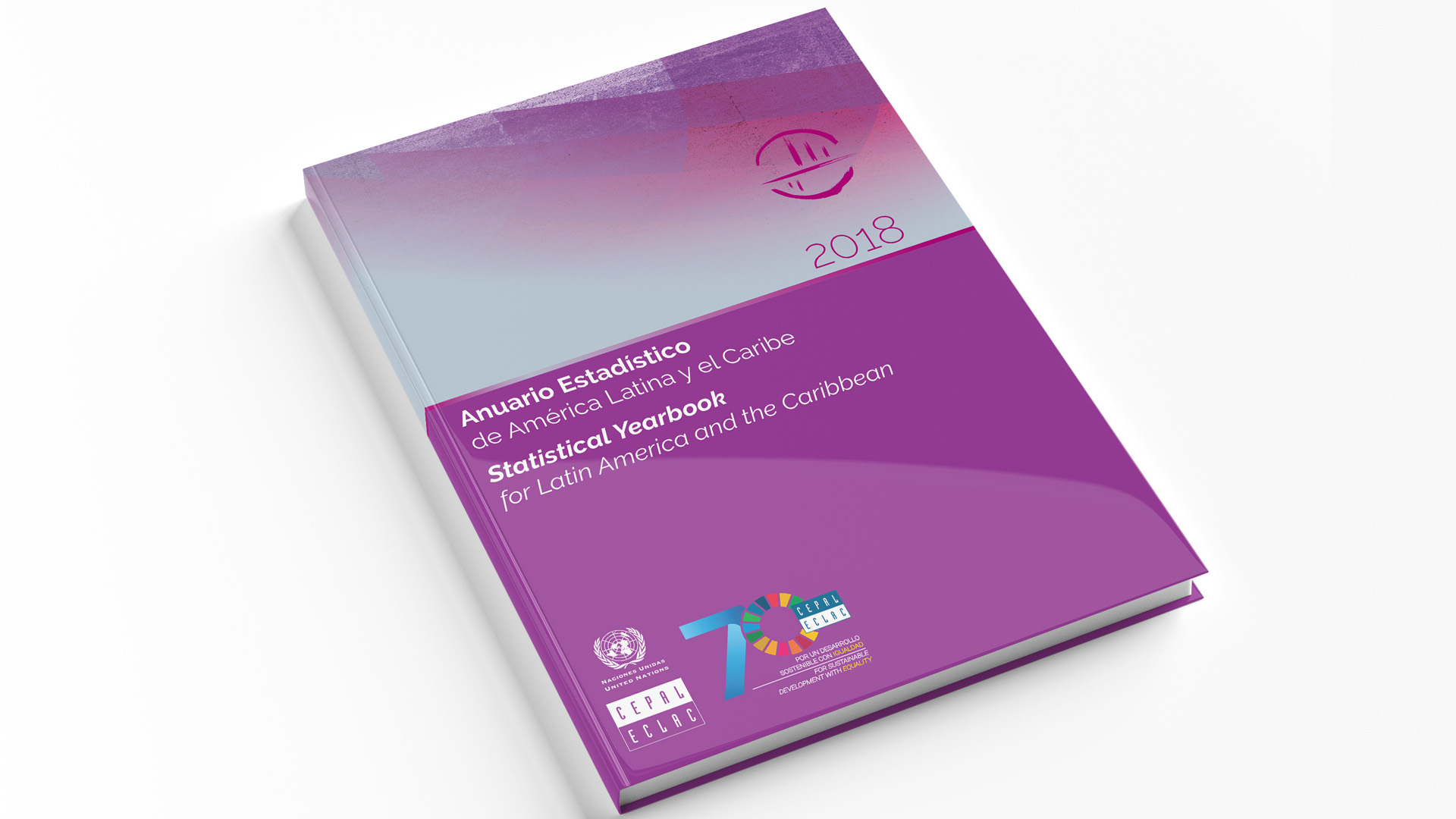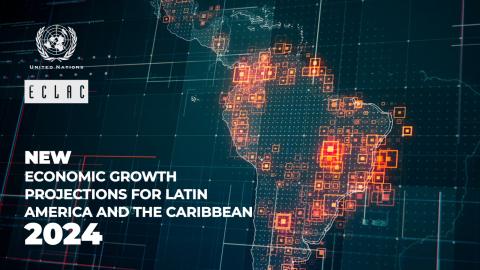News
Today the Economic Commission for Latin America and the Caribbean (ECLAC) launched the Statistical Yearbook for Latin America and the Caribbean 2018, available on its website, which presents an overview of the sociodemographic, economic and environmental development of the region’s countries.
This annual publication was released in the framework of the eighteenth meeting of the Executive Committee of the Statistical Conference of the Americas (SCA) of ECLAC, which is taking place through today at the central headquarters of the United Nations regional organization in Santiago, Chile.
The Statistical Yearbook, one of ECLAC’s most important publications, is a reference for those seeking comparable descriptive statistical data between countries and over time. The current edition contains information that was available through mid-December 2018.
The document is published in a print and electronic version, with some differences between them. In the print version, there is a selection of tables and graphics aimed at providing a summary of the statistical information from a regional perspective. The electronic version, meanwhile, includes a larger quantity of tables that provide more detailed information and refer to a much broader historical period. This information is part of the statistics available on CEPALSTAT, the platform that gives access to all the updated statistical information on the region’s countries that is gathered, systematized and published by ECLAC.
The Statistical Yearbook 2018 is divided into four chapters. In the first one, demographic and social aspects are explored, including indicators on population, work, education, health, housing and basic services, poverty and income distribution, and gender. According to this data, the population of Latin America and the Caribbean was just over 652 million inhabitants as of 2018, with 80% living in urban areas and a life expectancy at birth of nearly 76 years.
In the realm of gender inequalities, the lack of women’s economic autonomy is seen in the fact that 28.1% of women ages 15 and older do not have their own income, versus 13.2% of men.
With regard to conditions related to housing and basic services, 95% of Latin America’s population has electric lighting, 86% has access to water via pipes, while only 65% has an excreta disposal system available to them.
With regard to intraregional trade, in 2017 intraregional exports accounted for 15.7% of the region’s total exports, while intraregional imports represented 15.1% of total imports. Meanwhile, the terms of trade indices in the region (using 2010 as its base year) rose 7.33% for Latin America and the Caribbean in 2017 when compared with 2016.
The third chapter offers environmental statistics and indicators from the region. These include metrics on physical conditions; land cover; ecosystems; biodiversity; environmental quality; land; energy, hydric and biological resources; emissions; extreme natural events and disasters; human settlements; and environmental regulation and governance.
The information available indicates that the surface area of Andean glaciers and permanent snowfields has sharply declined in the last 20 years, losing 1,700 hectares between 1995 and 2015, which shows how glaciers have retreated or, in some cases, disappeared. This phenomenon endangers one of the main strategic reserves of freshwater in the region, entailing risks for agriculture, industry and the population’s access to drinking water.
Separately, between 2008 and 2017 a total of 462 disasters of significant proportion occurred in Latin America and the Caribbean. Between 2013 and 2017, disasters caused the death of more than 5,000 people and affected 10% of the region’s total population, meaning that more than 64 million people – a figure equivalent to the populations of Colombia and Ecuador put together – were either injured or lost their homes. Although the majority of deaths were caused by geophysical disasters such as earthquakes and tsunamis, drought, flooding and storms are the disasters that affected the largest proportion of people (93% of the total).
Finally, the Yearbook dedicates an additional chapter – available in its electronic version – to explaining in a detailed way the methodological aspects of the statistics presented, along with references to the data sources.
Given that most of the information comes from national statistics offices, central banks, international bodies and other official institutions, ECLAC invites users to pay attention to the sources and the technical notes that are presented in this publication. The figures are obtained using international methodologies and standards with the aim of ensuring the greatest possible comparability between countries, which means that these figures may not necessarily coincide with national data.


